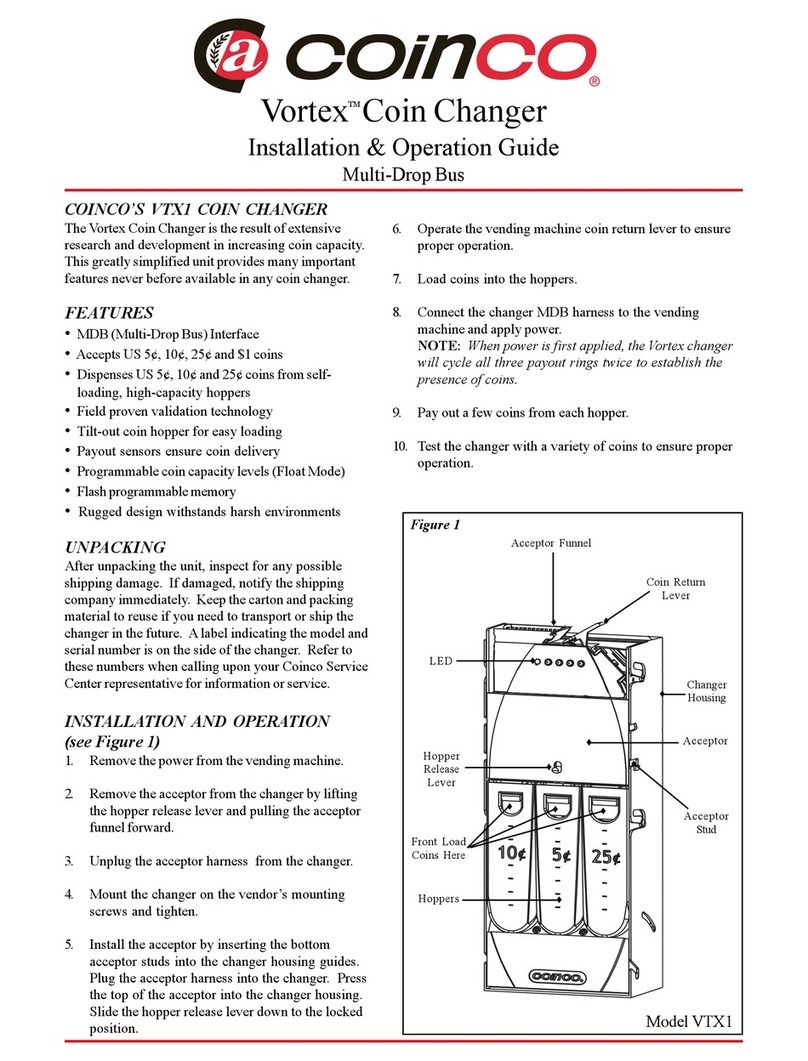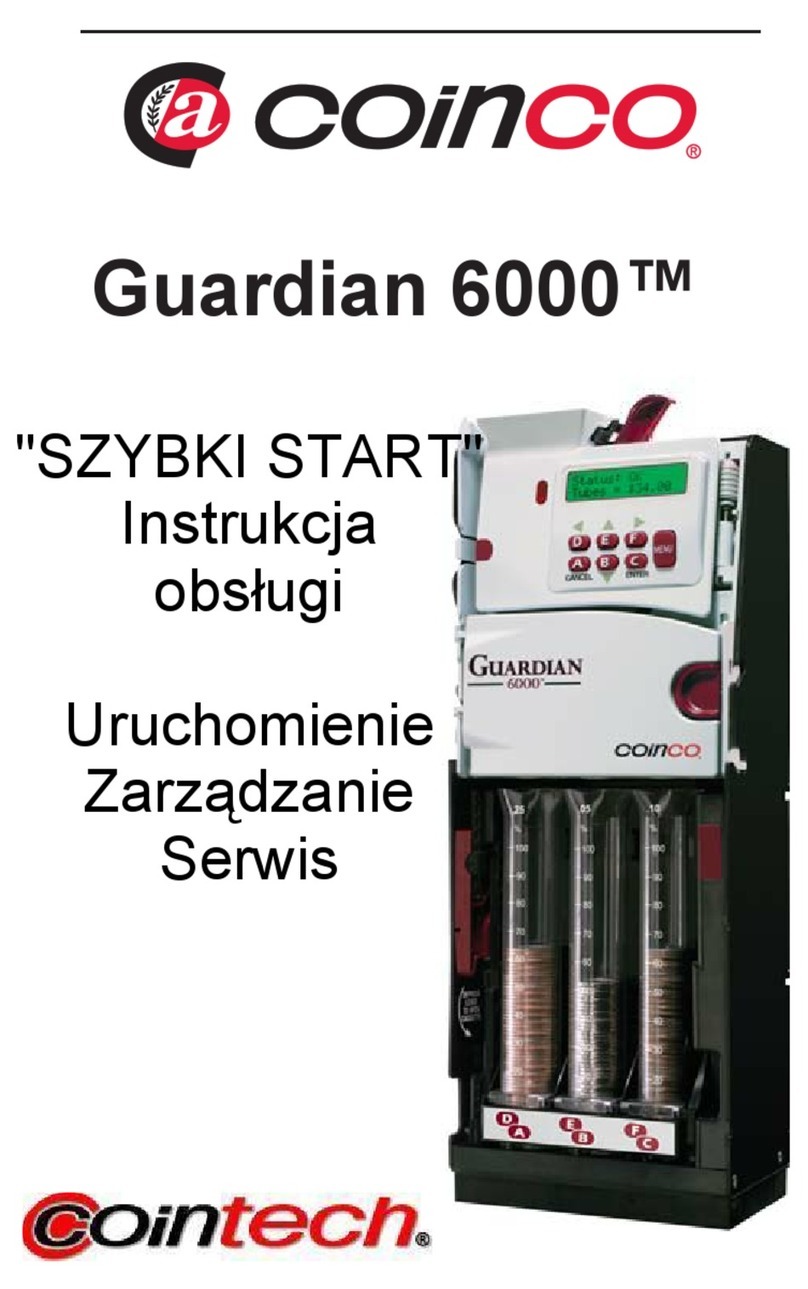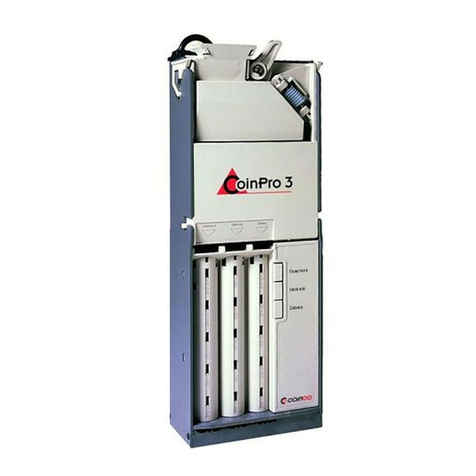Technical Manual Evolution Hopper Standard Interface Model (EV01000)
Page 4 of 22 22-10-07
Contents
1. Introduction.......................................................................................................................................... 6
2. Safety Note.......................................................................................................................................... 6
3. General Description............................................................................................................................. 6
3.1 Description ..................................................................................................................................... 6
3.2 Options........................................................................................................................................... 7
3.2.1 Track options........................................................................................................................... 7
3.2.2 Connector position .................................................................................................................. 7
3.2 Level Sensing ................................................................................................................................ 7
3.3 Connectors..................................................................................................................................... 7
3.4 Coin Sizes...................................................................................................................................... 8
3.5 Base-plate...................................................................................................................................... 8
4. Installation ........................................................................................................................................... 9
4.1 Baseplate ....................................................................................................................................... 9
4.2 Safety............................................................................................................................................. 9
5. Mechanical Description ..................................................................................................................... 10
5.1 General ........................................................................................................................................ 10
5.2 Removal of the Electronics and Opto Sensor Board. .................................................................. 10
5.3 Track guard Removal and Refitting ............................................................................................. 10
6. Electronic Description........................................................................................................................ 11
6.1 General Electronic Description .................................................................................................... 11
6.2 Operating Mode Selection ........................................................................................................... 11
6.2.1 MODE 0 DIRECT SWITCHING ............................................................................................ 11
6.2.2 MODE 1 LOGIC CONTROL.................................................................................................. 11
6.2.3 MODE 2 COIN COUNTING .................................................................................................. 11
6.2.4 RESET FUNCTION............................................................................................................... 12
6.3 Optical Sensors............................................................................................................................ 12
6.4 Optical Security Feature .............................................................................................................. 12
6.5 Motor Operation ........................................................................................................................... 12
6.6 Motor Current Limit ...................................................................................................................... 12
6.7 Coins With Holes ......................................................................................................................... 13
6.8 High Security Exit Window........................................................................................................... 13
6.8.1 Description ............................................................................................................................ 13
6.8.2 Security ................................................................................................................................. 13
6.8.3 Opto test................................................................................................................................ 13
6.8.4 Dirty opto ............................................................................................................................... 13
7. Hopper Application ............................................................................................................................ 14
7.1 Power Supply............................................................................................................................... 14
7.2 Suggested hopper connection ..................................................................................................... 14
7.3 Hopper control ............................................................................................................................. 15
7.3.1 Mode 0 .................................................................................................................................. 15
7.3.2 Mode 1 .................................................................................................................................. 15
7.3.3 Mode 2 .................................................................................................................................. 15
7.3.4 Security Output...................................................................................................................... 15
7.3.5 Coin Exit Output .................................................................................................................... 15
7.3.6 Low Level and High (Top) Level output ................................................................................ 15
8. Technical Specifications .................................................................................................................... 16
8.1 Coin Sizes.................................................................................................................................... 16
8.2 Capacity ....................................................................................................................................... 16
8.3 Connector .................................................................................................................................... 16
8.4 Electrical Interface ....................................................................................................................... 16
8.5 Logic Inputs.................................................................................................................................. 17
8.6 Logic Outputs............................................................................................................................... 17
8.7 Interface Options.......................................................................................................................... 17
8.8 Pay-out Rate ................................................................................................................................ 17
8.9 EMC approval .............................................................................................................................. 17
8.10 Environment............................................................................................................................... 17
9. Dimensions........................................................................................................................................ 18
10. Exploded Views ............................................................................................................................... 20



























